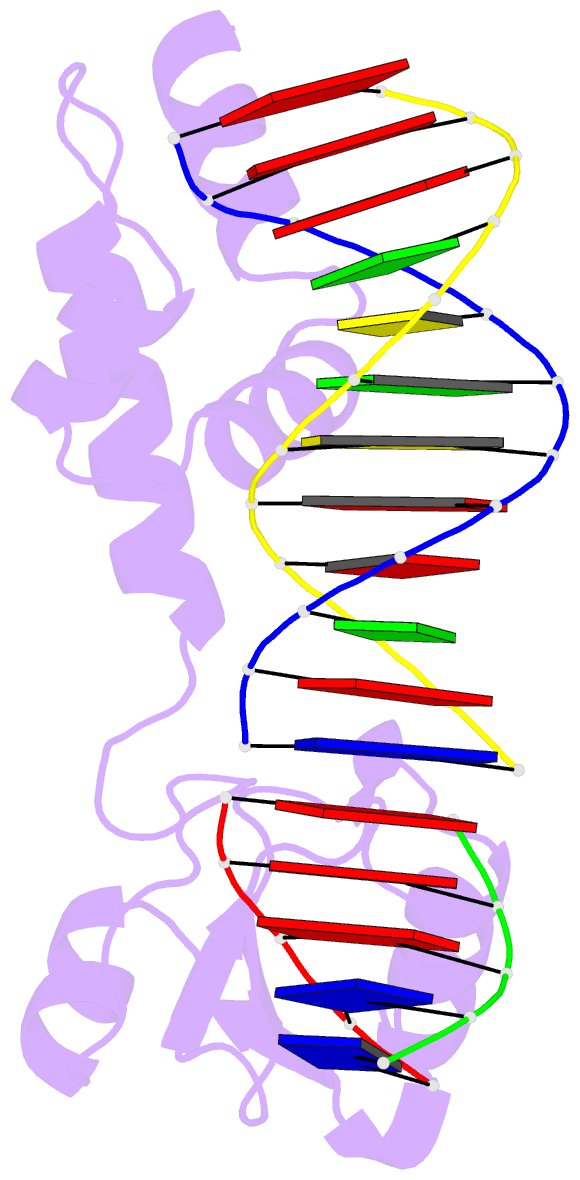Summary information and primary citation
- PDB-id
- 1u8b; SNAP-derived features in text and JSON formats;
DNAproDB
- Class
- metal binding protein-DNA
- Method
- X-ray (2.1 Å)
- Summary
- Crystal structure of the methylated n-ada-DNA complex
- Reference
- He C, Hus JC, Sun LJ, Zhou P, Norman DP, Dotsch V, Wei H, Gross JD, Lane WS, Wagner G, Verdine GL (2005): "A methylation-dependent electrostatic switch controls DNA repair and transcriptional activation by E. coli ada." Mol.Cell, 20, 117-129. doi: 10.1016/j.molcel.2005.08.013.
- Abstract
- The transcriptional activity of many sequence-specific DNA binding proteins is directly regulated by posttranslational covalent modification. Although this form of regulation was first described nearly two decades ago, it remains poorly understood at a mechanistic level. The prototype for a transcription factor controlled by posttranslational modification is E. coli Ada protein, a chemosensor that both repairs methylation damage in DNA and coordinates the resistance response to genotoxic methylating agents. Ada repairs methyl phosphotriester lesions in DNA by transferring the aberrant methyl group to one of its own cysteine residues; this site-specific methylation enhances tremendously the DNA binding activity of the protein, thereby enabling it to activate a methylation-resistance regulon. Here, we report solution and X-ray structures of the Cys-methylated chemosensor domain of Ada bound to DNA. The structures reveal that both phosphotriester repair and methylation-dependent transcriptional activation function through a zinc- and methylation-dependent electrostatic switch.





